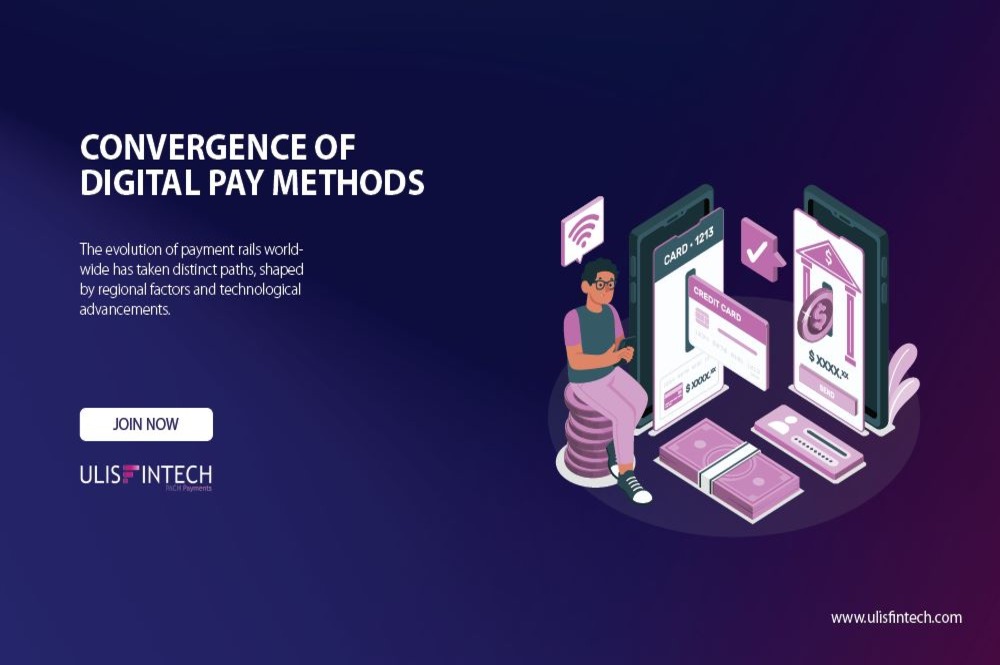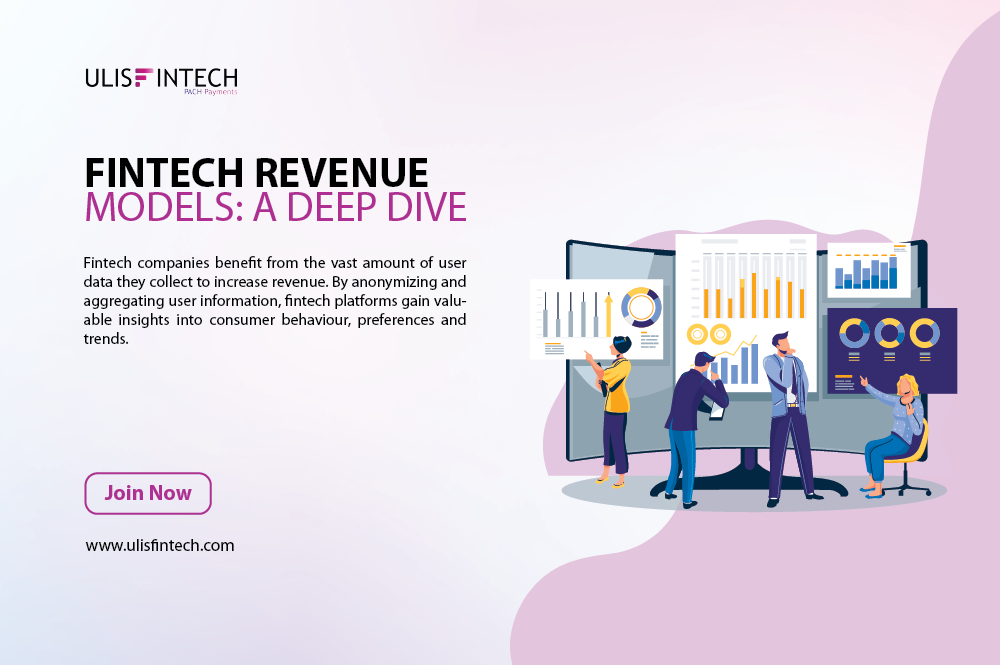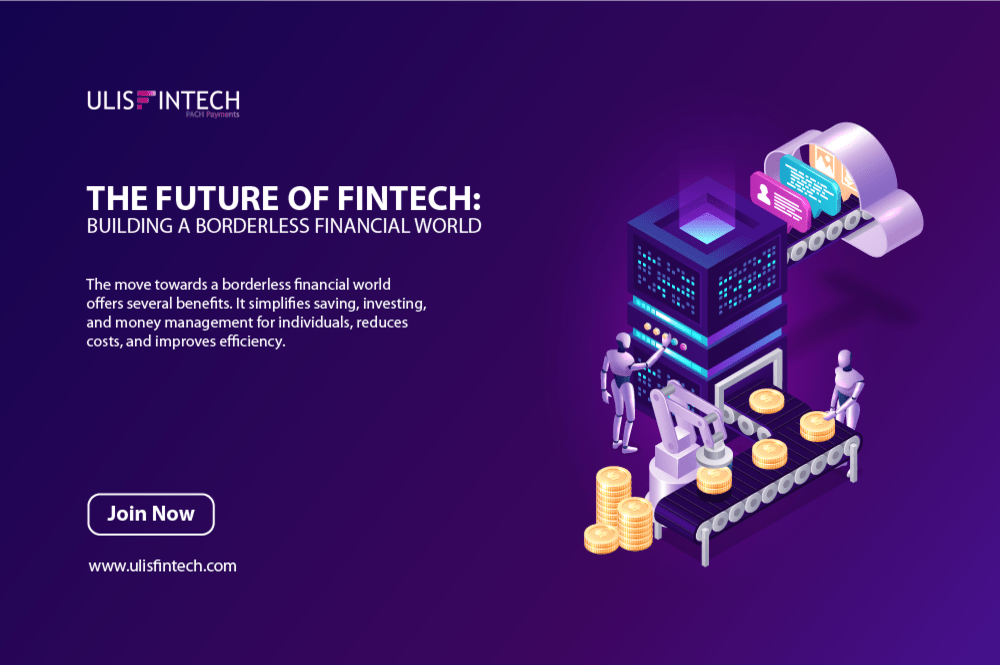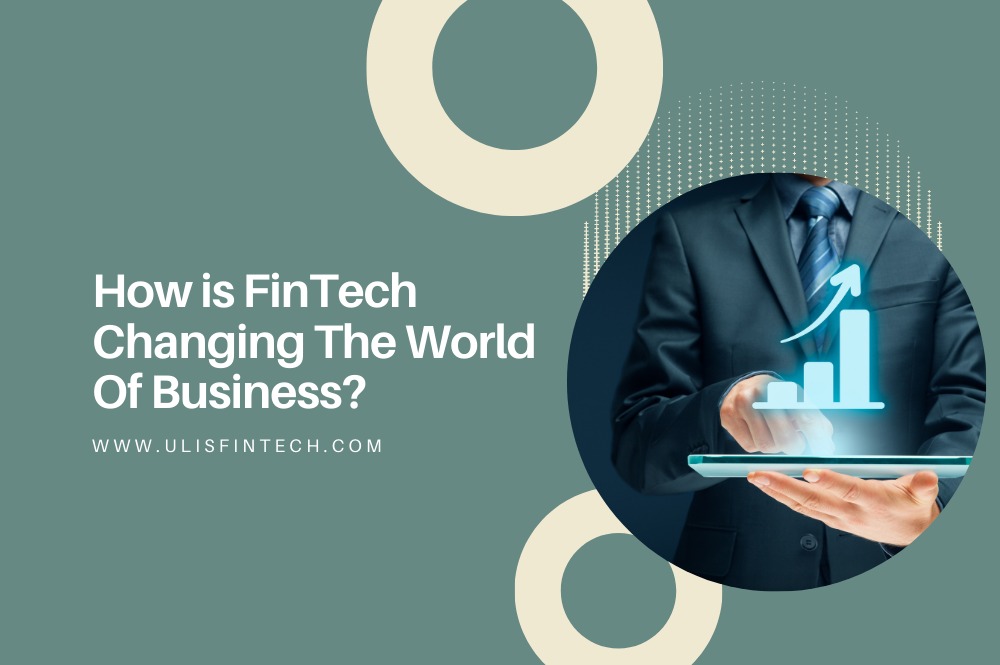Fintech Technology Concerned About The Future
Jul 07, 2022 - 12 MINS READ
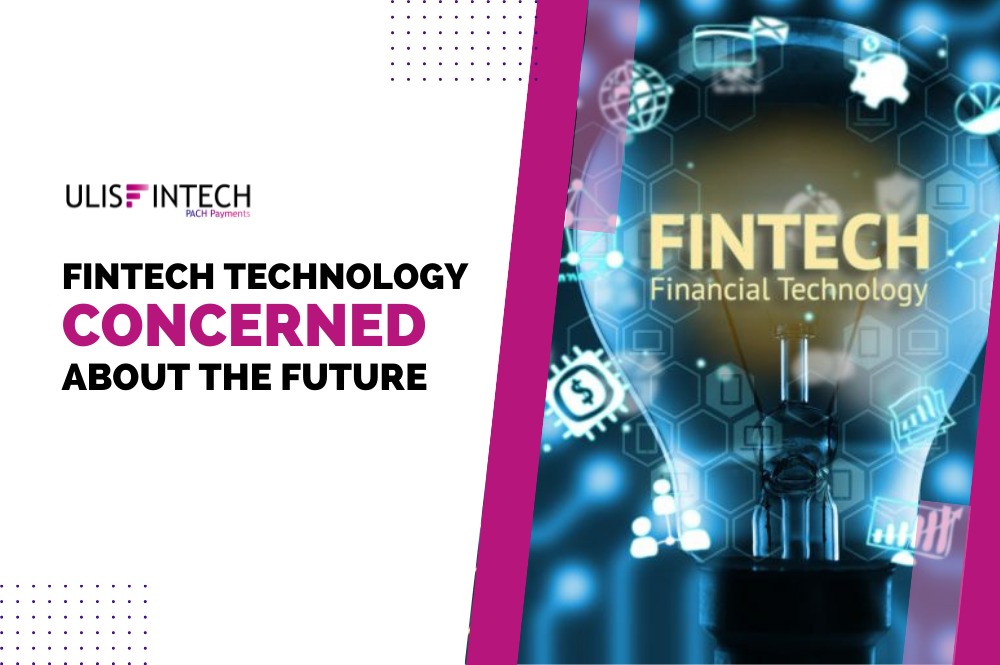
Fintech Technology concerned about the future
Fintech (financial technology) may lower costs and frictions, boost efficiency and competitiveness, and extend access to financial services.
The risks and financial stability consequences of the fast expansion of fintech businesses ("fintech"), amplified by the COVID-19 epidemic, are the topic of this section. Their rapid expansion into riskier business categories, combined with insufficient regulation and/or oversight, creates systemic risks and significant financial stability consequences.
In their respective markets, digital banks (or "neobanks") are gaining systemic importance. A case study on neobanks reveals various flaws:
- increased risk-taking in retail loan originations without proper provisioning and credit risk under-pricing;
- increased risk-taking in the securities portfolio, and
- insufficient liquidity management framework.
Technological advancement and innovation are the cornerstones of fintech growth and will continue to create disruptive business models in financial services. The important technologies, according to a study, will fuel fintech growth and influence the competitive landscape of finance over the next decade:
Artificial intelligence will provide enormous value.
According to McKinsey, artificial intelligence (AI) may bring up to $1 trillion in value to the global banking sector each year. Banks and other financial institutions are expected to embrace an AI-first approach, better preparing them to withstand incursion by increasing technology corporations.
Automatic factor creation, or the machine-based recognition of the components that drive outperformance, will become increasingly common in financial services, assisting in the refinement of financial modelling across the sector. Knowledge graphs and graph computing will also play a larger role as a crucial application of AI semantic representation. Their potential to aid in the formation of linkages and the identification of patterns across complex financial networks, relying on a diverse set of frequently divergent data sources, will have far-reaching ramifications in the coming years.
Finally, analytics that integrates better privacy safeguards will encourage minimum data utilization or the use of just relevant, essential, and suitably cleansed information in financial model training. Artificial intelligence applications will pervade the financial industry's front, middle, and back offices. Tailor-made products, personalized user experiences, advanced analytics, intelligent robotic systems, and chat interfaces, market trackers, automated transactions, and Robo-advisors, as well as alternative credit ratings based on non-financial data and facial recognition authentication, are all examples of customer-facing applications. Smart procedures increased information representation tools (epitomized by knowledge graphs), and natural language processing for fraud detection are among the middle and back-office applications.
Many financial organisations are still only using AI in irregular and dispersed ways, focusing on certain use cases or verticals. Leaders in the banking business, on the other hand, are using AI to alter their operations across the whole lifespan of their digital operations. Specifically, the financial industry is realising that algorithms are only as good as the data they use. The focus is shifting to acquiring a competitive edge from previously underutilised consumer behaviour data gathered through traditional operations. This will unleash the hitherto untapped potential of ecosystem-based finance, in which banks, insurers, and other financial services organisations collaborate with non-financial entities to provide seamless client experiences outside of their conventional mandate.
The severe automation of manual processes (a "zero-ops" attitude) and the replacement or augmentation of human choices by enhanced diagnostics will deliver improved operational efficiency for banks. The extensive use of classic and cutting-edge AI technologies, including as machine learning and facial recognition, to (near) real-time analysis of vast and complex consumer data sets, will result in improved operational performance. Future "AI-first" banks will emulate the speed and agility of "digital native" businesses and users. They'll innovate quickly, offering new features in days or weeks rather than months or years. Banks will also work together with non-bank partners to develop new value propositions that span journeys, technological platforms, and data sets.
Established banking protocols will be disrupted by blockchain.
DLT enables the recording and sharing of data across numerous data stores, as well as the recording, sharing, and synchronization of transactions and data across a dispersed network of participants at the same time.
Some DTLs employ blockchains to store and transfer data, as well as cryptographic and algorithmic approaches to immutably record and synchronize data across networks.
DTL will increasingly underlie ecosystem financing by allowing financial transactions to be stored in numerous locations at the same time. Cross-chain technology will increasingly promote blockchain interoperability, allowing chains built on various protocols to communicate and transfer data and value across activities and sectors, such as payments processing and supply chain management.
Smart contracts, zero-knowledge proof, and distributed data storage and exchange will continue to play a vital part in existing fintech developments such as digital wallets, digital assets, decentralized financing (Defi), and non-fungible tokens (NFT).
Furthermore, conventional stakeholders, like institutional investors and funds, are steadily increasing the proportion of digital assets in their portfolios, hence boosting access to capital and raising the potentiality and DTL to disrupt existing markets. Decentralized finance (Defi), for example, is a type of blockchain-based finance that employs smart contracts to eliminate the need for a central middleman.
DLT is making an impact on government policy and legislation as well. According to a poll done by the Bank for International Settlements (BIS) in early 2021, over 60% of central banks are testing or researching Central Bank Digital Currency (CBDC). For example, the People's Bank of China has initiated operational testing of a digital RMB initiative based on permissioned DTL, paving the path for better macroeconomic control and resource allocation.
Other noteworthy blockchain uses include:
- Banks are employing smart contracts to settle the collateral and cash component of a transaction in real-time. To increase the efficiency and scalability of cross-border sales, transaction processing, securities lending, and equity exchanges may all be resolved on the blockchain. Meanwhile, using the blockchain to trade securities backed by digital collateral allows for more efficient, transparent, and secure capital management as well as post-transaction equity settlement.
- Institutional investors are looking for DLT features such as tokenization for unlisted firms or private equity funds, spot exchange between established currencies and cryptocurrencies on digital exchanges, and client custody services such as key escrow encryption.
- Customers use agreed-to-share information from partner institutions to authenticate their identity online, in person, or over the phone, streamlining authentication procedures and providing quicker access to health data and government services. Only the information necessary for each transaction is provided; all other data is safely stored on the trusted provider's server.
- Decentralized non-custodial apps can eliminate middlemen by automatically creating deterministic (or "always valid") transactions. This allows people to get loans, invest, and exchange financial items without having to rely on centralized financial institutions. Defi uses deterministic smart contracts, which minimize counterparty risks and the expenses associated with rent-seeking middlemen, while also increasing market efficiency and transparency.
Defi, which is built on blockchain technology, is ushering in a new era of possibility by upending long-standing value networks and institutions. Defi is expected to grow dramatically as financial rules and regulations evolve.
Financial services firms will benefit from cloud computing.
According to the study, cloud technology will account for more than $1 trillion in EBITDA (profits before interest, taxes, depreciation, and amortization) across the world's top 500 corporations by 2030. According to our findings, efficient cloud utilization may boost migrated application development and maintenance efficiency by 38%, infrastructure cost efficiency by 29%, and migrated application downtime by 57%, resulting in a 26% reduction in expenses related to technical violations. At the same time, cloud-based security procedures and controls can help to increase platform integrity.
Cloud provider, cloud infrastructure, and private cloud are the three basic types of cloud services that financial institutions should be aware of. The infrastructure is held by cloud computing service providers, who provide cloud services to a variety of businesses or the public. Hybrid cloud architecture is made up of two or more types of cloud (private and public) that are kept separate yet linked by proprietary technologies. The infrastructure is developed for an individual customer's exclusive usage, and it can be deployed in the company's data centres or through external hosting facilities.
We've identified many important cloud computing trends for the future:
- Edge computing and cloud computing are critical: The link between edge devices, data centres, and the cloud is increasingly acknowledged in partition and development reasoning. As 5G connectivity creates new interactions and synergies across the internet of things (IoT), cloud computing, AI, and other technologies in sectors such as new retail, healthcare, industrial parks, smart cities, and industrial IoT, the development of the edge cloud is growing.
- Cloud containers encourage creativity. Container technology, which allows several workloads to operate on a single operating system instance, is being actively promoted by public cloud providers, lowering overhead and enhancing efficiency. On the platform as a service (PaaS) layer, this is driving cloud delivery model innovation. A container as a service platform will become increasingly important to cloud technology companies (CaaS).
- Integration of AI with the cloud is becoming more common: Image and audio search AI-cloud platform applications are increasing, propelling breakthroughs in high-value sectors like medical image analysis. Through cloud platforms, deep learning will continue to improve services for a wider variety of consumers.
Cloud computing frees financial firms from non-core activities like IT infrastructure and data centres, while also allowing them to use more flexible storage and computing services at a cheaper cost. At the same time, new cloud-based formats such as open banking and banking-as-a-service are shaking up the traditional customer-financial-service provider relationship.
Financial institutions will continue to rely on the cloud as they implement more agile capabilities and establish new companies that demand high market and customer response as well as scalability. Meanwhile, demand for cloud-based elastic computing, which allows computing resources to be dynamically modified to match demand variations, will rise as big data analytics is used at scale.
Banks also could extend cloud-based microservice architecture in the next years, where application programming interfaces (APIs) enable machine-to-machine communication and allow services to scale independently without having to expand the entire offering's coding base. Microservice-driven architectural change in banking will be sparked by the next generation of core banking applications.
The Internet of Things will usher in a new era of financial trust.
IoT is now coming of age, after years of languishing in the lowest reaches of the hype cycle, with significant financial implications. Vision and intelligent motion sensors, wireless communication networks, and application and operations support are the three layers that makeup IoT systems. RFID labelling, on the sensor front, provides a lot of untapped potential for automating item identification and logistics management. IoT communication solutions are also increasing, allowing devices to communicate across a larger range of networks, including wired and wireless networks, near-field communication solutions, low-power wide-area networks, narrow-band IoT, linked end-point devices, and centralized control management. Finally, embedded, and smart technologies are rapidly evolving, allowing for more sophisticated item communication.
Consider the fact that ecological, social, and corporate governance (ESG) factors currently control many investment strategies and regulatory laws from a financial applications standpoint. Several big countries, for example, have committed to reaching carbon neutrality and peak carbon emissions. Aside from expanding the use of renewable energy, success in meeting these objectives will hinge on better monitoring and control of industrial energy and power efficiency. This is an ideal situation for IoT applications. For example, carbon trading will become more correlated to IoT measures, presenting new opportunities for smart participants.
Meanwhile, insurers are embracing IoT to better understand risk, improve consumer interaction, and speed up and streamline the underwriting and claims processes. Auto insurers, for example, have traditionally used indirect factors like a driver's age, residence, and creditworthiness to establish prices. Thanks to the Internet of Things, data on driver behaviour and vehicle use, such as automobile speed and frequency of night driving, is now available. Insurers may contact clients more regularly and provide new services based on the collected data thanks to the technology. Customers frequently deal primarily with agents or brokers, and only contact the insurer directly for policy renewal or claims management, making the market suitable for efficiency advantages.
In banking, IoT-based inventory, and property finance, which combines IoT with blockchain, is improving risk management by verifying that accounting records match real-world transactions, allowing for a completely new system of trust. IoT is shaking up traditional trade finance in shipping and logistics, allowing banks to build new products based on commodities movement tracking’s, such as on-demand liquidity and other smart contract-based innovations. Another way that IoT is bringing banks closer to their clients is through embedding financial services into wearables, such as digital payments.
Open source, SaaS, and serverless technologies will decrease entry barriers.
New enterprises and financial innovation require speed and scalability, especially in the digital economy's fierce rivalry and winner-take-all dynamics. For technology companies and conventional financial institutions creating new fintech enterprises, open-source software, serverless architecture, and software-as-a-service (SaaS) have become must-haves.
The serverless architecture eliminates the need for businesses to manage their own servers, freeing up time and resources for customers and operations. SaaS allows businesses to utilize software as required without having to own or maintain it. Charges are connected to run software code and are not created round-the-clock, independent of business requirements, in a serverless architecture. It also encourages flexible scalability, which prevents idle and waste.
For firms trying to grow quickly, open-source software is a blessing since it provides free-to-use source code that gives developers a head starts in creating their own apps.
Each technology is valuable in and of itself, but when utilized together, organizations can swiftly expand infrastructure and build and deploy prototypes at a minimal cost. Traditional financial firms, on the other hand, confront considerable difficulties in utilizing technology across IT organizational structures, development skills, and risk management capabilities. They'll have to reconsider their IT strategy, prioritizing quick response IT skills as a primary priority for fintech innovation.
Application development will be redefined by no-code and low-code.
Instead of traditional computer programming, no-code development platforms (NCDPs) and low-code platforms allow programmers and general users to construct programs using graphical user interfaces and setups (e.g. drag-and-drop). While still in their infancy, the platforms have the potential to eliminate the requirement for scarce and expensive software skills.
NCDP is the use of component reuse and assembly in software engineering, DSL (domain-specific language), visual quick development tools, flexible workflow process orchestration, and design thinking from a technological standpoint. The advancement of cloud computing, DevOps, and other technologies that handle difficulties like containerization, inflexible scalability, and sustaining high availability computing environments are all tied to NCDP development.
NCDPs are frequently used by businesses to speed the development of cloud-based apps while maintaining business strategy alignment. Compliance may be maintained and enhanced, for example, since audit trails and document production can be automated on no-code or low-code systems. This is extremely beneficial to financial institutions and fintech firms that must react fast to market changes.
Google Cloud has bought AppSheet, a leader in the low-code and no-code software sector, and has invested in Unqork, a no-code software platform. Both services enable non-programmers to create applications without requiring specific coding knowledge.
Traditional financial institutions may compete with fintech start-ups by using no-code or low-code development platforms to free up valuable R&D resources to work on numerous projects at once.
Manual labour will be replaced by hyper-automation.
AI, deep learning, event-driven software, Robotic Process Automation (RPA), and other technologies and tools that increase decision-making efficiency and job automation capabilities are referred to as hyper-automation.
RPA, which makes it simple for businesses to deploy software robots like chatbots at scale, is already a big part of digital transformation, but technology is always pushing the envelope. RPA's main goal is to delegate the processing of workflow data and business interactions to robots, automating and standardizing business processes. The primary criteria for validating RPA tech viability are high repeatability, clear rationale, and robust stability. RPA will become more completely integrated with AI in the future, allowing it to cope with increasingly complicated business scenarios.
RPA is already automating financial procedures and accounting reconciliation for financial organizations across middle and back-office activities. Process automation for accounts receivable and payable, fund appropriation at shared finance and accounting service centres, work hour adjustment and review, automation of financial recording, reporting, and treasury processes, and period-end accounting and settlement are just a few of the areas where RPA is being used.
Automating manual tasks enhances productivity while also reducing human mistakes and allowing organizations to adapt to demand swings. While RPA is currently well-established among major financial institutions, we expect it to spread further across the sector. Robots that mimic human movements for basic paperwork and decision-making, for example, have the potential to automate 60% of accounts payable procedures.
Future competitiveness unlocked
These essential technologies and trends are becoming increasingly linked and interconnected, propelling fintech and finance industry innovation to new heights. It is currently a specialist financial service.
Fintech start-ups not only take risks but also put pressure on incumbents. The case study of the US mortgage industry shows that competitive pressure from fintechs has a major detrimental impact on traditional banks' earnings.
Decentralized finance (Defi), a type of financial intermediation based on crypto assets, has shown unprecedented growth in the last two years, potentially bringing improved efficiency and investment prospects. Defi is becoming more intertwined with traditional financial intermediaries. Despite its limited market size, unregulated Defi poses market, liquidity, and cyber concerns against a backdrop of regulatory uncertainty.
sub-sectors that excel at leveraging technology advancements to create apps, generate revenue, and influence the competitive environment Traditional financial institutions will have to use all of their resources to keep on top of the looming wave of financial sector upheaval in the future.
Guidelines that address both fintech businesses and incumbents in an equitable manner are required. More rigorous capital, liquidity, and operational risk-management criteria (at the entity and group levels) that are commensurate with their risks are desired for neobanks. Prudential oversight for incumbents may need higher attention on the health of less technologically sophisticated institutions since their present business models may be less sustainable in the long run. The lack of centralized institutions managing Defi makes effective regulation and monitoring difficult. Stable coin issuers and centralized exchanges, for example, are examples of crypto ecosystem features that should be regulated. Authorities should also urge Defi platforms to be subject to stringent governance frameworks, such as industry regulations and self-regulatory bodies. These organizations might serve as an efficient route for regulatory scrutiny.

